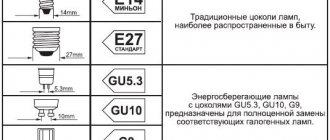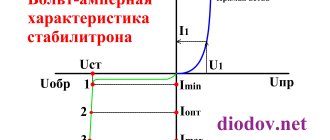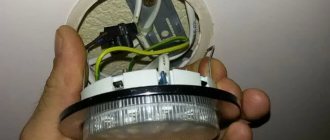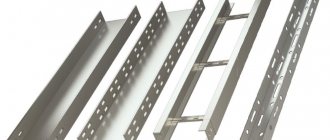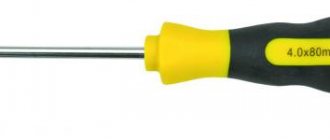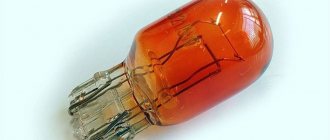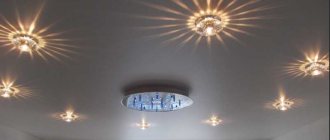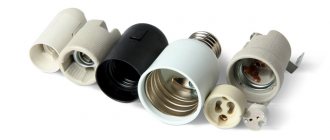A well-known lighting device - a light bulb - consists of two parts - a bulb and a base.
Using the base, the lamp is mounted in the socket and electric current is supplied through it. There are two types of lamp bases that we use in everyday life:
- threaded
- pin
Each is alphanumerically marked. The capital letter of the Latin alphabet indicates the type of base - E - threaded base, Edison base; G – pin base. The numbers that follow it indicate the diameter of the base in millimeters or the distance between the pins. More complex devices have more complex bases, and the markings are also different, but we will not write about them in detail in this article. Our task is to deal with household lamps. The most common threaded sockets in everyday life are E27 and E14.
Threaded bases
We are all familiar with lamps with this base. They are used for lighting residential premises, as well as outdoors. Believed to have been developed by Thomas Edison and patented in 1894 specifically for incandescent lamps. That’s why it’s called “Edison Base”. The design is a cylinder with a thread with a diameter of 27 millimeters. The housing is made of aluminum, at the end of the housing there is a contact to which the electrodes are connected. The electrodes lead to a tungsten filament, which begins to glow when electric current passes through it. All incandescent lamps work on this principle. For LED lamps, the driver is located in the base. The dimensions of the base are standard, which makes the bulbs easily replaceable: diameter 27 millimeters, height 26.67 millimeters. In addition to incandescent lamps, energy-saving lamps, halogen, and LED are produced with this base.
It happens that you bought a lamp, but the bases in it are not suitable for your light bulbs. Don't despair, you can buy an adapter. Numerous adapters allow you to combine different sizes and even types of bases.
Light bulbs with a narrow base are also called minions. The design is the same as all lamps with screw bases. It is used for lighting apartments, houses, for local and general lighting, and is also often used in refrigerators. And in the same way, with such a base you can see an incandescent lamp, a halogen lamp, an energy-saving lamp, and an LED lamp.
The dimensions of the lamps in these sockets are appropriate; it is not for nothing that they are also called Goliath. The height of the base is different and is 47.75 millimeters. Such lamps are not used in everyday life; they are used mainly for street lighting or for large objects.
Dimensions and design
The E40 base is called "Goliath" because of its size. So, the diameter of the bulb of such a light bulb is 4 cm, while the bulb bulbs for home lighting, for garlands, etc. range from 5 mm.
The plinth device is a thin-walled metal glass with a thread rolled onto it. Inside the glass there are parts of the lamp (electrodes, filaments), and on the outside there are contacts. The thread allows you to screw the lamp into the socket, which is the counterpart of the base (can be made of metal or ceramic) and is located in the lighting fixture.
At the bottom of the cartridge there are plate power contacts. One of the cartridge contacts is in contact with the central contact of the base, and the second contact (or pair) is in contact with the threaded part. This is how you connect to the network.
Main characteristics of lamps with socket diameter E40:
- power is several times greater than that of E27 lamps;
- screw base, which allows you to easily screw the lamp into the socket;
- voltage required for operation is 220V;
- flasks are transparent or matte;
- the light emitted can range from warm yellow to bright white;
- elongated lampshade.
Pin sockets
The base body can be ceramic, metal or plastic. The last two are considered the most reliable. Ceramic is used mainly in halogen lamps. Only ceramics can withstand the temperature to which a halogen lamp heats up during operation. Lamps with this base are designed for a voltage of 12V, so they are used mainly in decorative lighting, as well as in suspended ceilings and table lamps.
It is slightly different from other pin models - it has a thickening at the end of the pins, which allows the lamp to be securely and quickly fixed, just turn it slightly. They operate only from a 220V mains voltage. It is impossible to insert such a lamp into another type of socket with low-voltage lighting. The capital letter U in this case means that it is intended for energy-saving lamps. But the scope of application of the base is much wider. Today the following are produced with this base:
- halogen lamps;
- LED;
- luminescent;
- metal halide.
They are used for facade lighting, in everyday life - in spotlights, and for decorative lighting.
Lamps with such a base are used mainly for decorative lighting. However, it is also quite suitable for general lighting of a home or office. This type of base is in great demand for lamps in suspended ceilings. They are attached very simply and reliably and in general are capable of giving a lot of positive emotions.
G53 - this base has flat contacts and is used in recessed luminaires. An LED lamp with this base is used:
- In general lighting
- In architectural lighting
- In decorative and accent lighting.
In short, wherever you need to create directional lighting. It is also used in the lighting industry, automotive and aviation technology.
GX53 - this designation stands for: G - pin connection; X – thickening like a nail head at the ends of the contacts; 53 – distance between pins in millimeters. This LED “tablet” is actively used in suspended and suspended ceilings. The base has a small height of 28 millimeters. Lamps with this base operate on AC power and do not require transformers. Lamps with such a base have valuable advantages:
- It saves ceiling space since the installation height is within 12 millimeters
- The large diameter of the product allows you to install more LED elements, and this already saves money
- Lamps with such a base last a long time and consume little electricity.
- The absence of backlight is a very important quality for suspended ceilings.
Thus, lamps with a GX53 base are environmentally safe, since they do not emit any harmful fumes and emit a pleasant light close to daylight, they do not heat up during operation, and therefore eliminate the risk of fire, and instantly turn on at full power.
Base G13 - used mainly in fluorescent lamps or LED lamps with a tube-shaped bulb. The base consists of two brass pins mounted on a holder, which in turn is located in a metal cup. The length of the pins is 7 millimeters, the distance between them is 13 millimeters. The general design consists of conductive pins, a holder, a glass and a lamp bulb. Such a lighting device can only be installed in a special lamp, so it is almost never used in everyday life. We can still see such lamps in public and industrial premises, in offices, warehouses, medical and educational institutions, and even there they are already being replaced by other light sources. Lamps with a base of this type can operate on a 220 or 110V mains voltage and contain mercury, which imposes special requirements for their disposal. Tubular lamps with such a base can be of different sizes and different wattages. The longer the lamp, the greater its power.
And one more thing about these lamps: they cannot be connected to the network directly; they require a special ballast device, which can be either electromagnetic or electronic. The connection diagram in both cases is somewhat different, but this is more of a conversation for specialists.
Types of lamps with E40 base, their features and advantages
Incandescent lamps
They are one of the most common due to their low cost and simplicity of design. Light is created by heating the filament with an electric current, and the filament itself is placed in a flask filled with an inert gas, vapor, or under vacuum.
Other benefits include:
- Low sensitivity to voltage surges.
- Instant ignition.
- Invisibility of flicker when operating on alternating current, which is important in enterprises.
- Does not create radio interference during operation.
- Reliability in low and high temperature environments, resistance to condensation.
- Economic feasibility of installation in places with short-term occasional light switching on (pantry, etc.).
- Ability to work on any type of current.
- Low level of ultraviolet radiation (essential for museums, collectors, etc.).
Review of LED tube manufacturers
There are many manufacturers and brands in the LED light source market. Prices for LEDs are gradually decreasing, but the average buyer has an increased risk of buying a low-quality product.
The best manufacturers of premium T8 LED linear lamps are Philips, Osram, Gauss, Eurolamp. The prices are relatively high, but the quality matches.
The middle price segment is occupied by:
- Russian Optogan, Navigator, Newera, Era, Jazzway, Feron;
- Chinese Camelion, Selecta, Estares.
These manufacturers use inexpensive components without compromising quality. If the light bulbs fail, there is no problem with replacement under warranty.
Other uses
The outlet used (for example for toasters) was an Edison screw socket, when electrical outlets were still used primarily for lighting, and before mains sockets became common .
In North America, fuses were used in buildings wired before 1960. These basic Edison fuses screwed into a fuse socket similar to Edison incandescent bulbs.
Some wall socket adapters use an Edison screw to allow the socket to become ungrounded (for example, to install Christmas lights temporarily across a porch) or to create a switch with two outputs or to open it for two lamps. Another adapter can make a wall socket into a lamp holder (lamp socket).
other accessories have been made , including a smoke detector that charges within a few hours and lasts for days or weeks afterwards and still allows the connected light bulb to function normally. There was also electronics that stuck to the end of the propeller base and allowed the raised lamp to flash, for example to attract the attention of arriving guests or emergency vehicles.
Which lamps are better?
This question can be answered in different ways. If we compare light sources for a car based on a set of technical characteristics, then the most optimal choice will be LED lamps.
However, from the point of view of traffic regulations, the installation of lamps that do not match the type in car headlights is prohibited.
These requirements are specified in paragraph 3.4 of the traffic rules, as well as in article 12.2 of part 3 of the Code of Administrative Offenses of the Russian Federation. There is a penalty for violation - you can lose your driving license for up to one year or receive a fine.
By violating the requirements of the rules and installing more powerful lamps of a different type in the headlights of your car, you can cause a sharp negative reaction from drivers of oncoming cars. The light from your headlights will blind them, which can lead to an emergency. That is why such severe punishment is provided.
Let's look at why by installing a different type of lamp in your car's headlights, for example, LED instead of halogen, you can either be seriously disappointed in the quality of road lighting or dazzle oncoming cars.
Car headlights are created for a specific type of lamp!
If these are headlights for halogen lamps, then the parameters of the lamp strictly correspond to the design of the headlight.
Expert opinion
It-Technology, Electrical power and electronics specialist
Ask questions to the “Specialist for modernization of energy generation systems”
2G11 base Threaded bases are the most common type of base and are found in almost all types of lamps, from incandescent lamps to LED lamps. Ask, I'm in touch!
Applications in devices
Three-phase lamps have the suffix d to indicate double contacts, usually E26d or E27d, rarely E39d. The second pin is used for the lower filament inside the device. This additional contact is a ring located around the main contact. Unlike bayonet sockets, three-way and regular lamps are interchangeable.
The small Edison screw has nine threads per inch, or about 2.8 mm per thread. The average Edison screw has seven threads per inch, or about 3.6 mm per thread. In the US, the Energy Independence and Security Act of 2007 to improve energy efficiency only applies to the average Edison screw, all others are considered "specialty" lamps.
DII diasonde fuses use the same E27 thread as standard 230V lamps, but have a longer body and cannot be screwed into the lamp holder (socket). The lamp base is too short to contact the bottom terminal of the fuse holder. However, it is possible to screw a DII fuse holder without a fuse into an E27 socket type lamp holder.
A number of disadvantages of the screw base compared to the bayonet mount:
A number of advantages of these bases:
The types of lamp bases are constantly being improved. When buying a lamp or choosing a light bulb for it, you need to pay attention to the base used in the lamp.
Source
